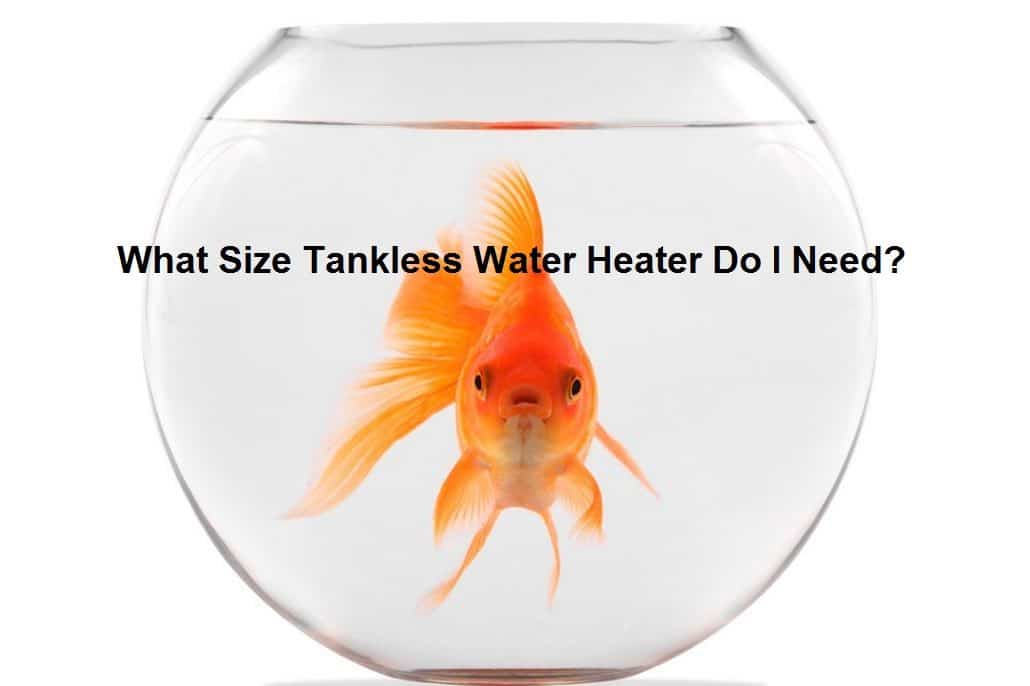Why a Tankless Water Heater?
In this article you find information on how to determine what size tankless water heater you need. Plus learn the main differences between a tankless water heater versus a tank.
You’ve probably caught yourself casting a long, sideways glance – otherwise known as a dirty look – at your water heater.
It’s big. It takes up space you probably could use for storage, or remodeling a basement. It’s hardly a thing of beauty – odd-shaped and clunky-looking.
Ultimately you may be paying a rental fee “Average of $20.00”, plus applicable taxes, fees, and cost of wasted energy.
More importantly, it might not be the most economical way for you to heat water for your home. An alternative: is a tankless water heater, also known as a demand water heater, because it provides hot water only where it is needed.
What Is a Tankless Water Heater?
Tankless water heaters probably won’t engender dirty looks; they are much smaller – about the size of a suitcase – and so are less obtrusive than conventional water heaters. But they also offer a limited flow of hot water per minute and cost more upfront – issues you might be able to reconcile in the long term.
Let our home comfort advisers help you decide if a tankless water heater is right for you and your home plumbing.
When you turn on a hot water faucet with a tankless water heater, cold water travels through a pipe and into the unit, where it is heated by coils and delivered right where you need it – right on demand. Without standby heat loss, the monthly energy savings can add up. The department estimates that tankless water heaters:
- Can be between 24 and 34 percent more energy efficient for homes that use 41 gallons or less of hot water a day
- Can be between 8 and 14 percent more energy efficient for homes that use a great deal of hot water, or about 85 gallons or more of hot water a day
- Result in an average annual savings of about $100
- Can achieve even greater savings – up to 50 percent – in a low ratio consumption “between 2 and 5 gallons per minute”
“Water Heater” It’s Not Pretty, But It Works
Your water heater is like a reservoir – storing between 20 and 80 gallons of water at a time and delivering it when you turn on a hot water faucet. It releases this hot water from the top of the unit; to replace it, cold water enters the bottom so that the tank always stays full.
The operation sounds logical enough until you consider that water is constantly heated in the tank – even when a hot-water faucet in your home hasn’t been turned on. The result is what the U.S. Department of Energy refers to as “standby heat loss” – a wasteful condition that costs you money every month. A tankless water heater sidesteps this problem even more effectively.
What Size Tankless Water Heater Do I Need?
We first need to figure out the rate of gallons per minute used in our household. Imagine someone is taking a shower while someone else is trying to wash a load of whites in the washing machine, and the third person is washing dishes. In this example, we will consider an incoming water temperature of 50 F.
- The person taking a shower at 1.5 GPM, and the temperature desired is 105 F.
- The washing machine running at 2.0 GPM with a water temperature of 120 F.
- The other person doing the dishes at 1.5 GPM with a desired water temperature of 110 F.
Ideally, to maintain the water temperature required by all of these functions at the same time, your requirement is a tankless water heater that is capable of raising the temperature of the water to 70 F at 5 GPM. Most gas-fired water heaters are capable of doing this. However, they are rated at a specific temperature rise over a maximum amount of GPM.
For example, a 200,000 BTU gas-fired tankless unit can raise the total water temperature to 50 F at a maximum of 7.4 GPM. As a basic rule of thumb, each GPM subtracted from the total allows a 10-degree increase in water temperature. In this scenario, a 200,000 BTU water heater would be able to heat all of the water in a house at a 6.4 GPM flow rate to 110 F, and at a 5.4 GPM flow rate, all the flowing water would be heated to 120 F. Since only the washer needs this temperature, a 200,000 BTU tankless water heater in this example is considered the right size.
GPM = Gallons Per Minute, F = Fahrenheit
Let the Experts Help you Crunch the Home Plumbing Numbers
Admittedly, the tankless water heater is an investment, but it will take time to pull even on the initial costs. As long as you’re doing the math, mark the other side of the balance sheet in favor of tankless water heaters. While conventional water heaters cost less upfront, they last only between 10 and 15 years.
Tankless water heaters last nearly twice as long, or 20 years or more, so you won’t need to replace them nearly as often. Your final decision may well turn on how much hot water your family uses – and at what times you need the water most.
Make an appointment with our Impressive home comfort advisers in Your Home to find out – before you give your clunky water heater one more dirty look.

